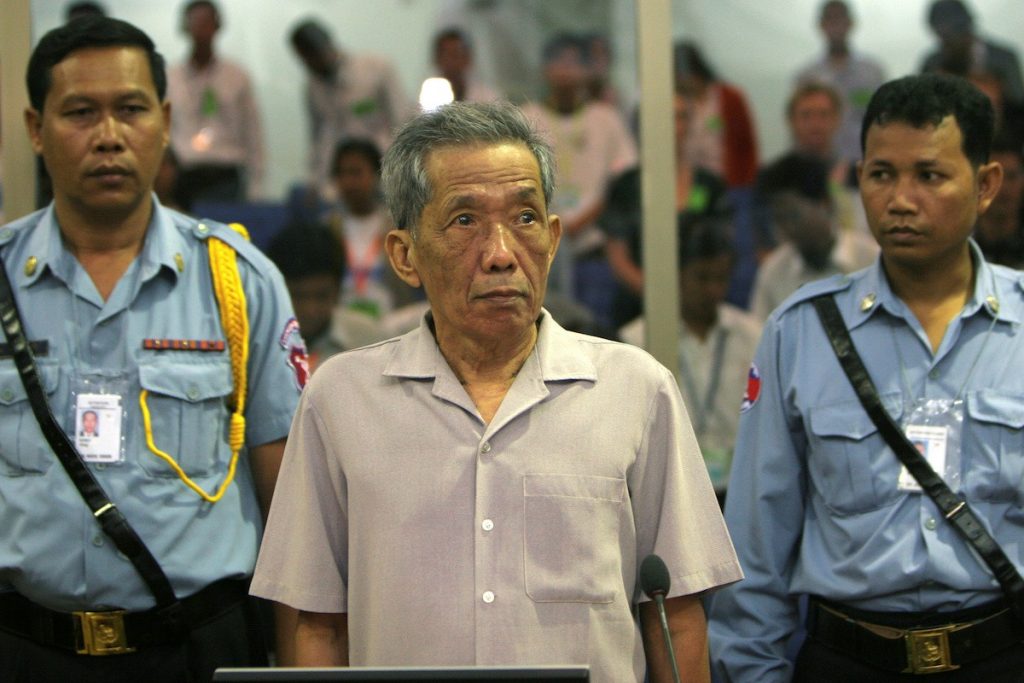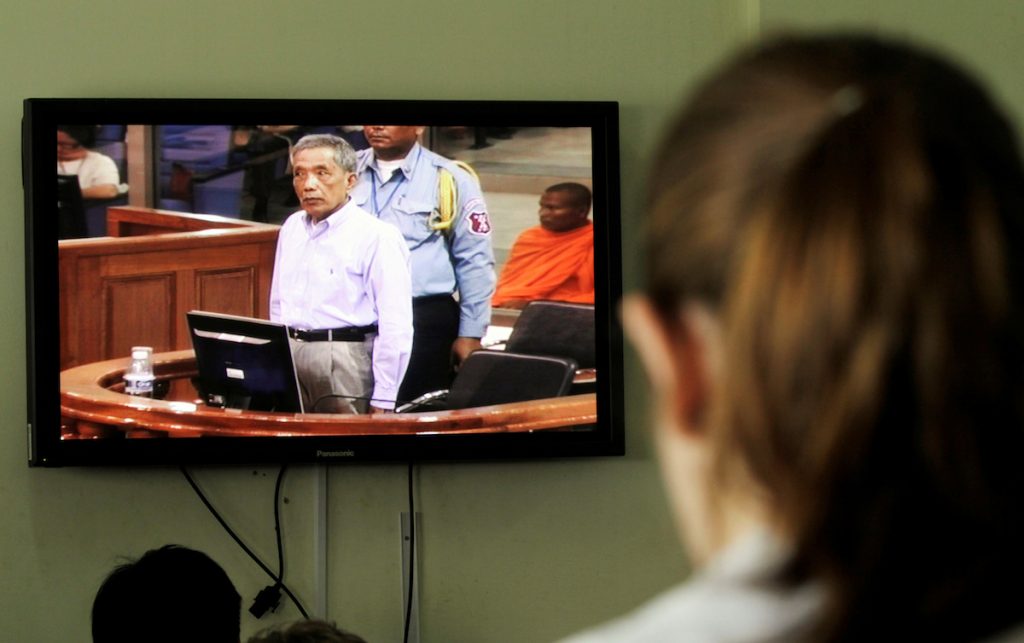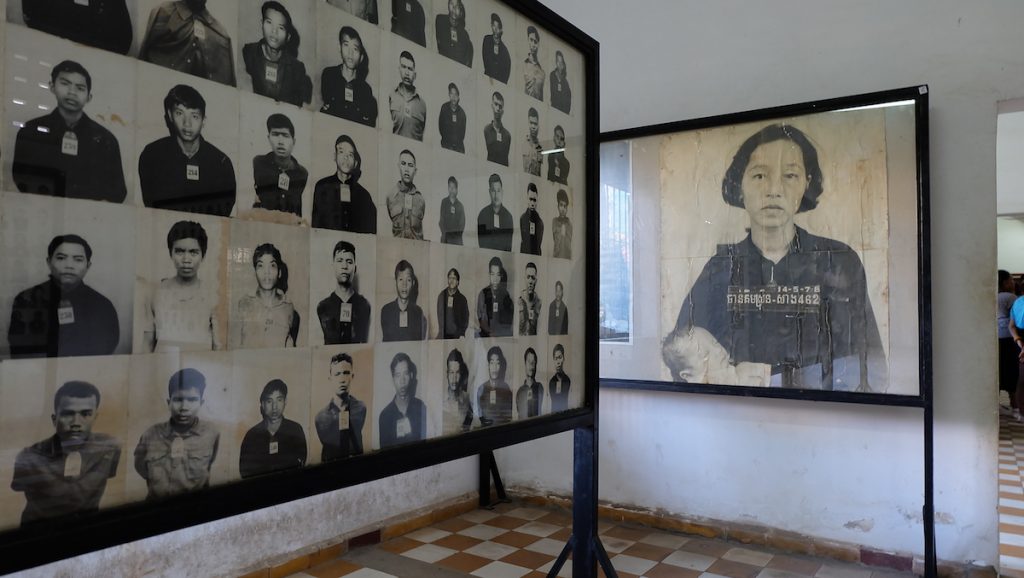
The Khmer Rouge commander known as Comrade Duch, Pol Pot’s main executioner and security chief who oversaw the murder of at least 14,000 Cambodians at the notorious Tuol Sleng prison, died on Sept. 2. He was 77.
Kaing Guek Eav, or Comrade Duch, was the first member of the Khmer Rouge leadership to face trial for his role in a regime blamed for at least 1.7 million deaths in the “killing fields” of Cambodia from 1975 to 1979.
Duch died at 00:52 a.m. at the Khmer Soviet Friendship Hospital in Phnom Penh, said Neth Pheaktra, a spokesman for a tribunal set up to prosecute top Khmer Rouge leaders.
He gave no details of the cause but Duch had been ill in recent years.
In 2010, the UN-backed tribunal found him guilty of mass murder, torture and crimes against humanity at Tuol Sleng prison, a former Phnom Penh high school that still stands as a memorial to the atrocities committed inside.
He was given a life sentence two years later after his appeal, on the grounds that he was just a junior official following orders, was rejected. Duch — by the time of his trial a born-again Christian — expressed regret for his crimes.
US Ambassador to Cambodia W. Patrick Murphy, in a comment on Twitter, called his conviction “a milestone in ensuring accountability”.

There was no immediate reaction from the government of Prime Minister Hun Sen, a former Khmer Rouge cadre who rebelled, fled to Vietnam and later helped to drive them from power.
Duch was one of only a handful of top Khmer Rouge figures convicted before they died. Paramount leader Pol Pot died in a Khmer Rouge jungle hideout in 1998.
Under Duch’s leadership, detainees at Tuol Sleng prison, codenamed “S-21”, were ordered to suppress cries of agony as Khmer Rouge guards, many of whom were teenagers, sought to extract confessions for non-existent crimes through torture.
The guards were instructed to “smash to bits” traitors and counter-revolutionaries. For the Khmer Rouge, that could mean anyone from school teachers to children, to pregnant women and “intellectuals” identified as such for wearing glasses.
Former maths teacher
Beneath Tuol Sleng’s chaotic facade, Duch — himself a former maths teacher — had an obsessive eye for detail and kept his school-turned-jail meticulously organised.
“Nothing in the former schoolhouse took place without Duch’s approval. His control was total,” wrote photographer and author Nic Dunlop, who found Duch in 1999 hiding near the Thai border, two decades after the Khmer Rouge fell.
“Not until you walk through the empty corridors of Tuol Sleng does Stalin’s idiom that one death is a tragedy — a million a statistic, take on a terrifying potency,” Dunlop wrote in his account of Duch and his atrocities, “The Lost Executioner”.

At S-21, new prisoners had their mugshots taken. Hundreds are now on display within its crumbling walls.
Norng Chan Phal, one of the few people to have survived S-21, was a boy when he and his parents were sent to Duch’s prison and interrogated on suspicion of having links to the Khmer Rouge’s mortal enemy, Vietnam.
His parents were tortured and killed but Chan Phal survived to give testimony at Duch’s trial in 2010.
“He was cooperative, he spoke to the court frankly. He apologized to all S-21 victims and asked them to open their hearts. He apologized to me too,” Chan Phal told Reuters.
“He apologized. But justice is not complete.”
Source: Licas Philippines
0 Comments